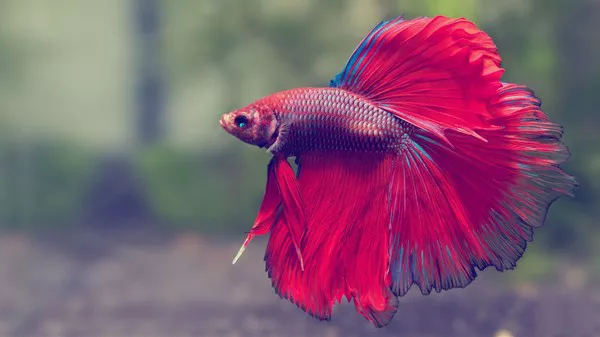Betta fish, also known as Siamese fighting fish, are captivating aquatic pets that have captured the hearts of fish enthusiasts worldwide. Their vibrant colors and unique personalities make them a popular choice for both beginner and experienced hobbyists. One aspect of caring for betta fish is their diet, and bloodworms are often considered a delicacy for these finned companions. In this guide, we’ll explore the best practices for feeding betta fish bloodworms, including frequency, portion sizes, and nutritional considerations.
Understanding Betta Fish Dietary Needs
Betta fish are carnivorous by nature, meaning they primarily consume animal-based protein sources. In the wild, they feed on a variety of small insects, larvae, and crustaceans. In captivity, replicating this protein-rich diet is essential for their health, growth, and overall well-being.
The Role of Bloodworms in a Betta’s Diet
Bloodworms are the larvae of the non-biting midge fly and are commonly used as a live or frozen food option for betta fish. They are high in protein and offer a nutritional boost that supports the fish’s energy levels and growth. However, like any food source, moderation and proper feeding practices are key.
How Often Should You Feed Betta Fish Bloodworms?
Variety is Key:
While bloodworms are a valuable addition to a betta fish’s diet, they should not be the sole food source. A varied diet ensures that your betta receives a broad spectrum of nutrients. Alongside bloodworms, incorporate high-quality betta pellets, flakes, and occasional treats like brine shrimp.
Frequency:
Bloodworms can be given as a treat 2 to 3 times a week. They should not constitute more than 10-15% of your betta’s overall diet. Overfeeding bloodworms can lead to nutritional imbalances and potential digestive issues.
Portion Control:
The size of the bloodworm portion depends on the size of your betta and the overall meal. Generally, a small pinch of bloodworms is sufficient for a single feeding. It’s important not to overfeed, as uneaten food can lead to water quality issues.
Alternating Feeding Schedule:
Rotate between different food types and sources to ensure your betta receives a balanced diet. For instance, feed pellets on non-bloodworm days to ensure a well-rounded nutritional intake.
Monitor Your Betta:
Observe your betta fish’s behavior and appearance to gauge its health and satisfaction with its diet. A well-fed betta will exhibit vibrant colors, active swimming, and an overall energetic demeanor.
Nutritional Considerations
While bloodworms offer valuable protein and nutrients, they lack certain essential vitamins and minerals. Supplementing with other foods is essential to address these nutritional gaps. High-quality betta pellets or flakes fortified with vitamins and minerals should constitute the staple diet.
Tips for Feeding Betta Fish
Avoid Overfeeding: Overfeeding can lead to obesity, bloating, and water quality issues. Betta fish have small stomachs, so provide only what they can consume within a few minutes.
Maintain Water Quality: Uneaten food can decompose and affect water quality. Remove any uneaten bloodworms after feeding to prevent water contamination.
Fast One Day a Week: To aid digestion and give your betta’s digestive system a break, consider fasting your fish for one day a week. This practice can promote better overall health.
Feed in Small Amounts: Break the daily feeding amount into multiple small feedings throughout the day. This approach mimics their natural feeding behavior.
Conclusion
Feeding betta fish bloodworms can be a delightful and nutritious addition to their diet, enhancing their health and vitality. However, it’s crucial to remember that moderation, variety, and proper nutritional balance are essential for their overall well-being. By incorporating bloodworms as occasional treats alongside a diverse array of high-quality foods, you’ll ensure that your betta fish thrives in its aquatic environment. Regular monitoring and adjustments to feeding practices based on your betta’s needs will lead to a happy and healthy aquatic companion.
Recommended reading:

























